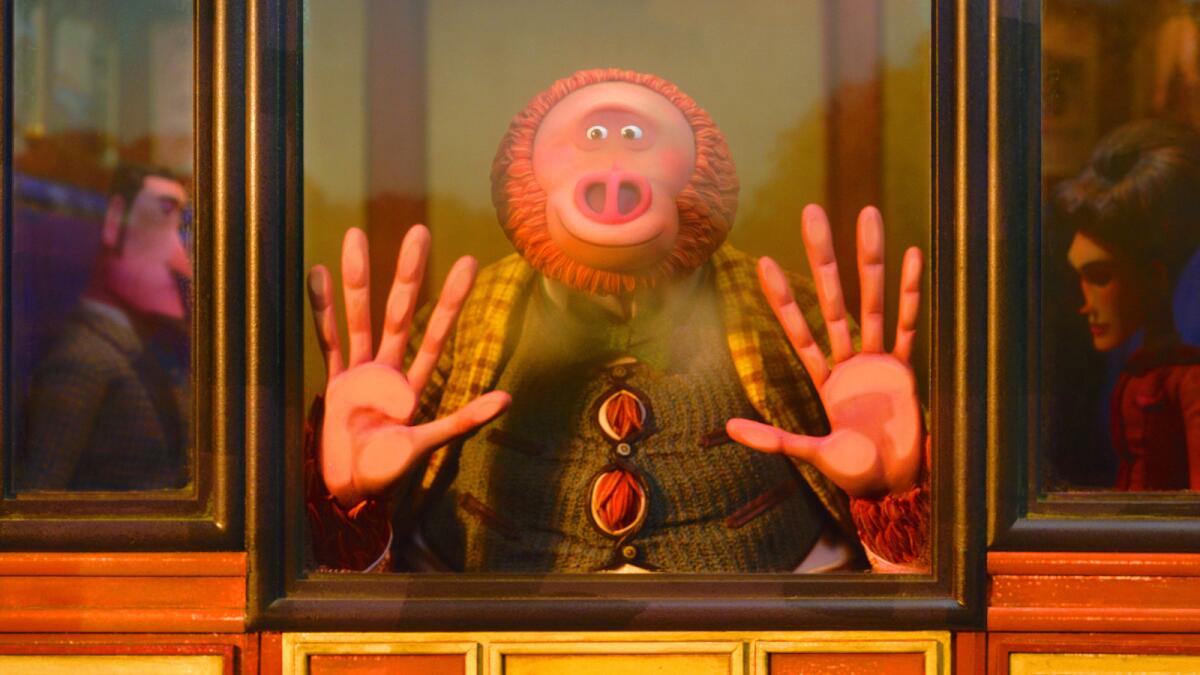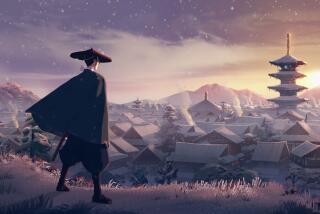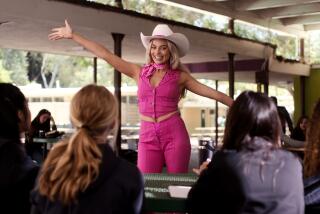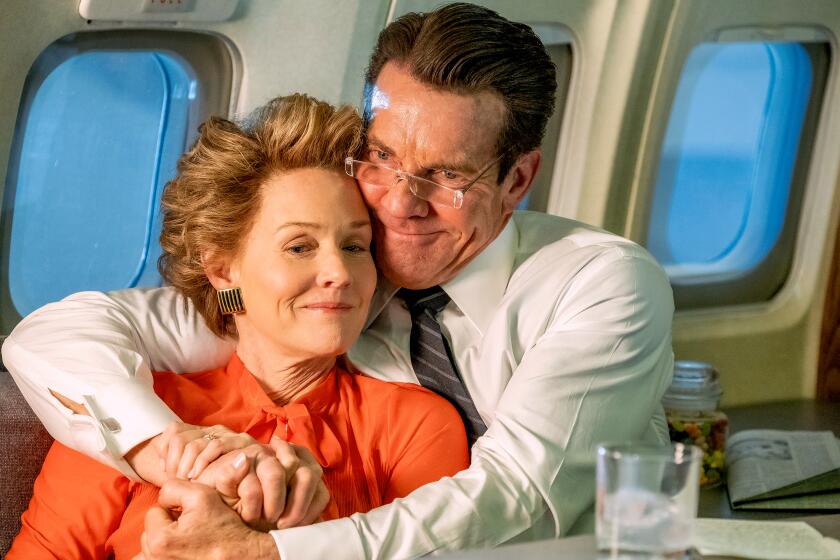These Oscar contenders from around the world show how vital animation is in 2019
Massive studio releases aren’t the only notable films eligible for the animated feature Oscar — a range of very different contenders illustrate just how varied the field is.
‘Ne Zha’
“Ne Zha” is a crazy, gorgeously animated, epic adventure; a modern take on a Chinese legend by a first-time feature director who goes by the name Dumpling. It’s the second-highest-grossing non-English film worldwide and China’s official submission for the international feature Oscar.
“Ne Zha is a household mythology name in China,” says 38-year-old director Yang Yu, better known as Jiaozi (Dumpling).
“But after I studied Ne Zha’s origin from ‘Investiture of the Gods’ [16th century Chinese mythology], I found out [he] was actually an evil, cynical character. I saw an animated feature, ‘Prince Nezha’s Triumph Against Dragon King’ (1979) when I was a kid. In this movie, Ne Zha was perceived with an image of a celebrated hero. Most of the Chinese audience’s memories of Ne Zha originated from this animated feature.
“Therefore, the Ne Zha we adored actually came from adaptation. People have long forgotten the original character.”

The animated “Ne Zha” is the second-highest-grossing non-English film ever and China’s submission for the international feature Oscar.
Jiaozi’s take draws heavy influence from Hong Kong martial arts films, cinematic comedies and Japanese anime — Americans will probably see echoes of Looney Tunes as well. In the film’s packed story, Ne Zha is born to humans but with a demonic nature as a result of machinations of dueling immortals. His loving parents know there’s a clock on his life: After three years, the rapidly growing boy will be destroyed by a divine lightning strike.
“The real driving force is the individual’s resistance to fate,” says Jiaozi. “Since hope brings people power and strength, my intention was to use slapstick action-comedy to convey this idea to the audience in a more pleasant manner.”
The filmmaker, whose only previous credit was a short, was unprepared for “Ne Zha’s” runaway success.
“I still haven’t gotten used to this feeling. Knowing the film was submitted [for the international feature Oscar] still feels unbelievable.”
‘Weathering With You’
The “magical girl” is a longstanding trope in Japanese pop culture, but in the hands of auteur Makoto Shinkai (2016’s exquisite “Your Name”), “Weathering With You” contains unexpected themes and turns.
In Shinkai’s vision, Tokyo is slowly drowning due to relentless rains. Two outsiders, one who apparently can control the weather, fall in love, but either they — or the city — may be living on borrowed time. The film’s visuals are full of lush and tactile textures.
“If I can make the audience remember memories, scents, impressions by visually looking at the scenes, that is what I feel is the significance of creating animated features,” Shinkai says.
“The rain-related disasters that occur frequently connected to my motivation of wanting to depict weather. International politics that are leaning toward nationalism, making people pretend not to see the sacrifice of others. Other inspirations came from Japanese folk tales and the Shinto religion. Also, rebelling against various criticisms that came from ‘Your Name’s’ success — for example, that I shouldn’t be using disaster for entertainment — was also a driving force in making this film.”

A twist on the “magical girl” anime genre goes to unexpected places in “Weathering with You.”
“Weathering,” with its urgently topical metaphors and non-black-hat-or-white-hat characters, resists convention.
“If the definition of a hero is a person who would save both his significant other and the world, the protagonist of this film, Hodaka, is not a hero,” Shinkai says. ”But in reality, the world is changing due to climate change. Would a happy ending indeed come so soon?”
Missing Link

With “Missing Link,” writer-director Chris Butler and Laika made an epic adventure on a scale previously unheard of in stop-motion animation.
“Traditionally, stop-motion films tend to feel enclosed and that’s just the nature of the medium. You’re limited to the size of your set, where the camera can fit and also the size of the puppets, obviously,” says Butler. “In the past, it negated stories of a grander scale. Technical innovations and advancements we’ve fully embraced at the studio have enabled us to paint on a bigger canvas.”
For “Missing Link,” in which a Bigfoot-like character with a gentle soul (voiced by Zach Galifianakis) goes on a quest to find his yeti-like relatives, the filmmakers blended their physical puppets and settings with CG effects to create giant vistas — oceans and mountain ranges among them. Even the fact that the lead characters were adults rather than kids changed the size of the film.
“The scale [of the settings] was smaller because the main characters were larger. We could already start by making a lot more; we could fit more into the studio.”
In this video exclusive (courtesy of Laika), animators show how they executed an emotional sequence in which Mr. Link/Susan finds himself in an ice cave like a room full of mirrors.

“Missing Link” and the secrets of stop motion.
Butler brought a “Raiders of the Lost Ark” sensibility to the film in scale and ambition, as well as technique.
“I think I said to the crew, ‘What we’re going for here is if David Lean made ‘Around the World in 80 Days,’ starring Laurel and Hardy.”
‘The Swallows of Kabul’
Adapting Yasmina Khadra’s novel of life in Afghanistan under the Taliban took an unusual approach — or two. Co-directors Zabou Breitman and Eléa Gobbé-Mévellec persuaded the Algerian author to allow them to animate “The Swallows of Kabul.”
Breitman applied her theater background: “I had the actors play their parts in costume inside the sound studio. They were fighting, eating, crying. I asked them to mumble, cough, improvise. I asked that the animators follow the actors, their hands, their hesitations, their movements and respect even the moments when they weren’t moving at all ... I asked Eléa if she could make the characters look like the actors.”
Gobbé-Mévellec said the film’s evocative watercolor animation style “was the best way to express the specificities of this place. The strong white light could be the paper, the dark shadows became the black ink line and the sweetest colors could appear and disappear between both, like the dust of Kabul. For me, those contrasts and softness were appropriate to express this strong story.”

The visually beautiful “Swallows of Kabul” paints a painful portrait of life under the Taliban.
Breitman treasures the line, “Do you think one day we will be listening to music in Kabul?”
“First, because it is a beautiful metaphor on freedom, on the ability for human beings to do marvelous things such as art, when they are not busy fighting. Second, because my own father said it, he played [the character] Nazish, he was very old and struggled ... because he was so weak. It was the last part he played. He never saw the movie. But it is him, his voice, his hands, his face and his breathing. And now he is a drawing, my dad is immortal,” says Breitman.
More to Read
Only good movies
Get the Indie Focus newsletter, Mark Olsen's weekly guide to the world of cinema.
You may occasionally receive promotional content from the Los Angeles Times.









